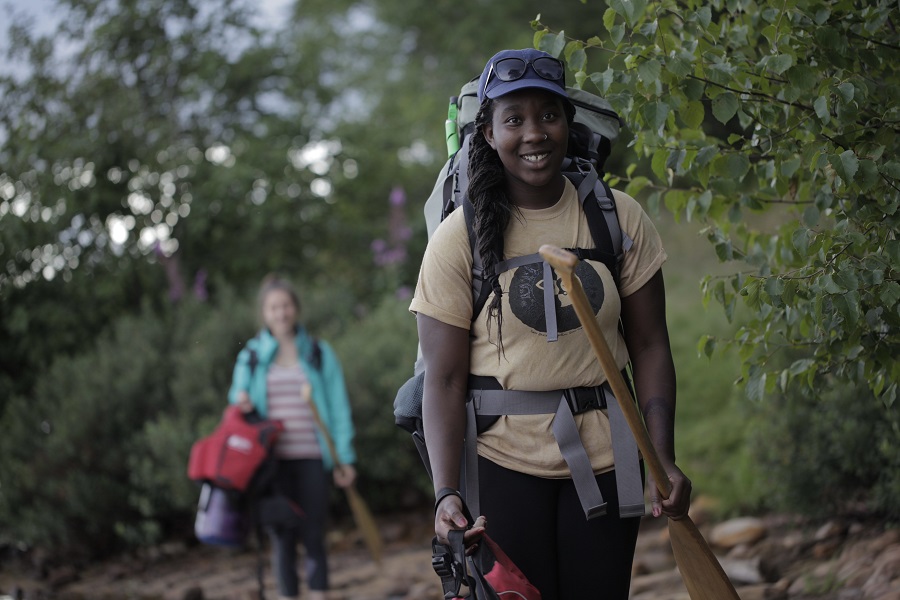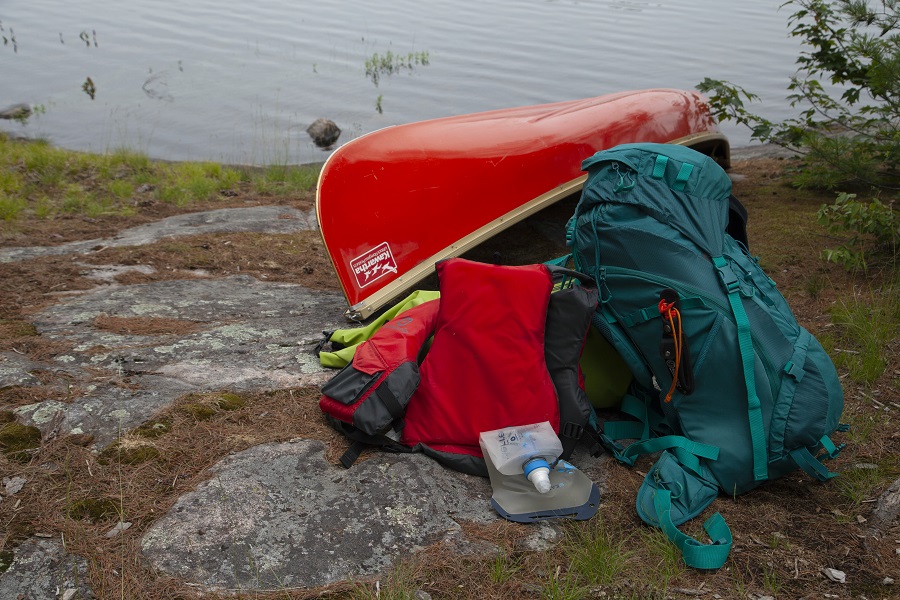You’ve heard about this fantastic new adventure through a friend, route guide, or Instagram. It looks kind of tough, and you’re pretty new to the whole backcountry thing.
Still, you don’t want to miss out, so you decide to go for it.
But as you start planning, there’s a little voice wondering if this is really the best idea.
Listen to that voice.
It’s possible to get in over your head, so here are some questions to ponder as you prepare for an upcoming outing and decide whether it’s a safe option for you.

Know your comfort and skill levels
Don’t glaze over this section!
It might sound basic, but it gets some visitors into trouble each year.

Ask yourself these questions before planning any activity, backcountry or otherwise:
- Have you done this activity (hike/bike/paddle) before?
- How far do you usually go? And at what difficulty level have your past experiences been?
- How is your heart health?
- Are you a strong swimmer?
- Are you a strong, experienced paddler?
- Are you going with someone who is more experienced that can help guide you?
- If you were to get stuck, do you have wilderness skills to keep you safe until help arrives?
- Can you carry everything you need to pack?
Bringing a child or pet with you? Run through the same set of questions for them.
Be realistic and honest with yourself as you answer these questions.
Choosing a trip within your skill and comfort levels will help minimize the chance of injury, accident, rescue, and tragedy. (It’ll also probably make your trip more enjoyable.)
Plan your route
Have you ever trip-planned before, and do you know where to start?
This differs from frontcountry to backcountry because you can’t just follow Google Maps to arrive at the campground or rely on sequential site numbers to guide you through.
Ask yourself:
- Do you understand the route difficulty based on the description and map?
- Do you know how to read a map?
- Once you’re on the trail or lake, will you be able to tell north from south?
- Can you read a compass and do you understand what to do with the reading?

Knowing how to read a map and a compass will help you gauge your trip distance and difficulty. It will also help you navigate once you’re out exploring because the real world looks very different than a few markings on a piece of paper.
If you have never navigated before, choose a beginner backcountry option, such as a simple paddle-in site before tackling a more complex trip.
Factor in the temperature, weather, and season
The weather plays a big role in your trip’s success and — as we all know — the forecast can always change.
Ask yourself:
- Have you checked the weather for your trip dates?
- Have you packed appropriate clothing for the forecast and the season?
- Have you packed extra clothing in case the forecast changes?
- Is your gear properly waterproofed?
- Do you know what to do if a snow, rain, or thunderstorm comes in when you’re on the trail, on the water, or at your site?
- Should you fall into cold water, do you know how to get out and get warm?
- Do you know when it’s time to turn back?

The weather can change at the drop of a hat. Being prepared to deal with inclement weather is a big part of being prepared to venture into the backcountry.
Remember: unlike the frontcountry, you can’t just hop in your car when the weather gets rough or the temperature drops.
Be absolutely sure you have the knowledge and equipment to navigate bad weather.
Pack the essentials
There are many options for extra comforts on your trip, but don’t do away with the essentials to make room for them.

Ask yourself:
- Are you confident that you have everything you will need?
- Do you have enough food?
- Do you have an option to filter water, and do you know how to use it?
- Do you have shelter?
- Have you packed a first aid kit, and do you know how to use it?
- Have you refilled any prescription medications to ensure you have enough?
- If you’re paddling, do you have the mandatory equipment required by law?
- Can you carry everything you need with you in one trip or are you prepared to make multiple trips?

You can’t run to the store for extras while you’re in the backcountry. You could be kilometres from the closest store, so make sure you have everything you need with you.
And remember: whatever you bring in needs to come back out with you. Do not leave litter or gear behind.
Tell someone where you’re going
Once you’ve picked a route, and decided how long you will be gone, share that plan with someone responsible who will monitor your progress.
Remember: cell reception is usually unavailable in the backcountry.

Ask yourself:
- Will they have good cell reception / the ability to call for help should you need it?
- Do you trust them to follow through on an SOS message?
- Do they understand who they need to contact and how to convey your location to emergency crews?
- Will they notice if you don’t come back on time?
Get more support
If you’re less experienced or need a boost in confidence, try these tips:
- Test your skills with short trips or easier routes initially
- Practice at home (this works for skills from packing to portaging)
- Book a trip with an experienced outfitter first to learn the basics from a pro
- Go with someone who is more experienced than you and be honest with them about your comfort/skill level
For additional trip-planning resources, visit My Canadian Canoe Routes or other guide books, the Canadian Red Cross, and OntarioParks.com.
